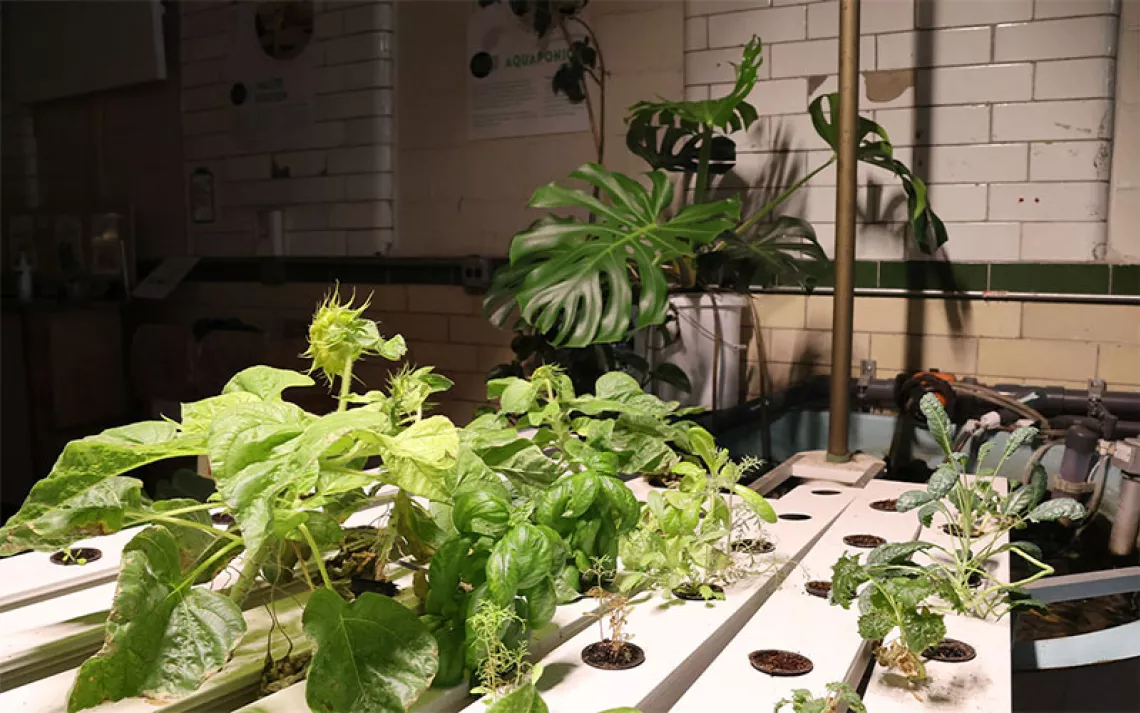Starbucks Falls Short on Environmental Commitments
Reports suggest that caffeine lovers’ iconic mermaid may not be so green after all
Since the early 1970s, Starbucks has held a special place in cupholders. Widespread infatuation with the company’s caffeinated beverages has earned the coffee giant a storefront on almost every corner. With outposts in 75 countries and a whopping 13.3 million people enrolled in its loyalty rewards program, Starbucks has scorched nearly all of its closest competitors among major U.S. food brands (most of which aren’t even coffee chains) in total market value.
With such reach and power comes tremendous responsibility. Starbucks touts its own corporate responsibility—claiming to be climate-change-aware and cognizant of its environmental cup-print—but how many latte-sippers know that their paper cup actually isn’t recyclable and that it’ll likely end up in a landfill? Might the knowledge that Starbucks’s meat supply is pumped with antibiotics alter the market’s appetite for the popular chicken and double-smoked bacon sandwich? Although the company prides itself on environmental awareness and progress toward sustainable products, multiple reports point to the mega-corporation’s failure to live up to its own purported standards.
A recent resolution from the nonprofit corporate watchdog As You Sow slammed Starbucks for continuing to provide most customers with single-use plastic cups despite the company’s Greener Cup initiative and criticized the coffee giant’s role in promoting the global to-go coffee culture. As You Sow’s objective is to bring to shareholders’ attention Starbucks’s negligence to fulfill its environmental promises. According to the resolution, Starbucks has fallen dramatically short on meeting an ambitious 2008 commitment to make 25 percent of its cups reusable by 2015. What happened? By 2011, the company had only increased its percentage of reusable cups to 1.9 percent and, as a result, reduced its 2015 goal to 5 percent reusables. Even this, apparently, proved unrealistic—Starbucks recently promised to double its current usage of reusable cups by 2022, which requires but a jump from 1.4 to 2.8 percent of all its cups.
“Starbucks has said they’ve been trying to promote reusable cups for years, but there’s clearly been little effort made toward what should be an easy policy to meet,” says Conrad MacKerron, As You Sow’s senior vice president. “If getting customers to care was a high priority, they’d be doing more onsite to offer incentives,” he adds. “There are other creative ways to get people to bring back reusable cups, such as offering a ceramic mug for those people ordering in.” MacKerron encourages consumers to keep the pressure on Starbucks by voicing their concerns at individual stores.
As You Sow’s resolution also addresses the company’s failure to establish a comprehensive policy to phase out its signature jumbo green plastic straws, despite the existence of the credible alternative that is paper straws. The Ocean Conservancy picked up just under half a million straws along coastlines all over the world this past year—a fraction of the total global plastic waste collected. Starbucks—which hands out more than 2 billion plastic straws a year—could be a key player in reducing that count.
For many businesses, the pressure is on to reduce plastic straw pollution. The Lonely Whale Foundation, an NGO that engages people in marine degradation issues and solutions, has already pushed the native Seattle company to participate in its Strawless in Seattle initiative, through which Seattle plans to enforce a ban on sales of all plastic straws and utensils by July 2018. This means all 300 Starbucks storefronts in the city will have to adopt alternative straws within the year. Hopefully, that momentum won’t stop at Seattle city limits. “I think we’re going to see increasing amounts of this break-free-from-plastic campaign to get plastic reduced globally,” MacKerron says.
Cup and straw pollution, however, isn’t the only snafu in Starbucks’s environmental portfolio. Six food-safety and animal-rights nonprofits—Center for Food Safety, Consumers Union, Food Animals Concerns Trust, Friends of the Earth, the NRDC, and U.S. PIRG Education Fund—have come out with an extensive report card grading companies according to the antibiotics present in their meat supplies. Starbucks earned a D+, which ranks the beloved chain behind the likes of McDonalds, KFC, and Taco Bell. Earlier this year, Starbucks committed to sourcing antibiotics-free poultry by 2020. However, it has yet to devise a policy for its beef and pork.
Asked to comment on these two reports, a spokesperson for Starbucks responded, “Starbucks cups are some of the most recyclable in the industry, and we are proud of what we’ve done to make them greener. Since 2006, our hot cups have contained 10 percent post-consumer fiber—it’s the first of its kind approved by the U.S. FDA. We also have offered a cup discount since 1985 and spent millions to encourage reusable mugs and tumblers since 1985.” The corporation also restated its commitment to reducing antibiotics in poultry by 2020.
As a company with the influence and reach to effect real progress through its environmental commitments, Starbucks arguably has a responsibility to develop and maintain the most sustainable practices it can afford. Still, at least part of the burden falls on consumers to keep the corporation honest. So next time you need a Starbucks fix, be sure to put in a plug for more reusable, and healthy, options.
 The Magazine of The Sierra Club
The Magazine of The Sierra Club




